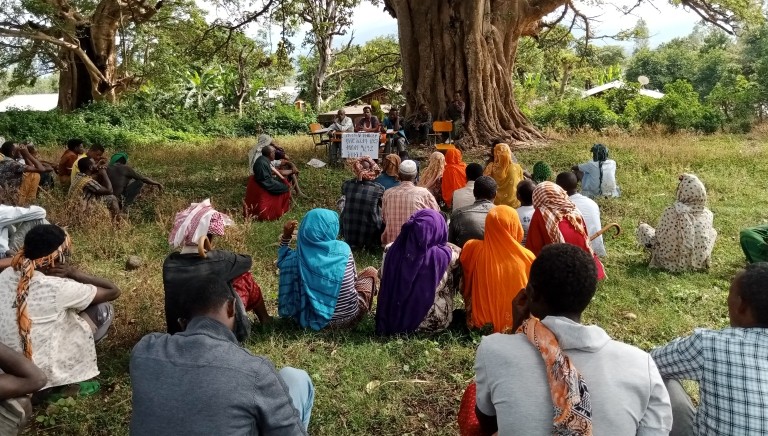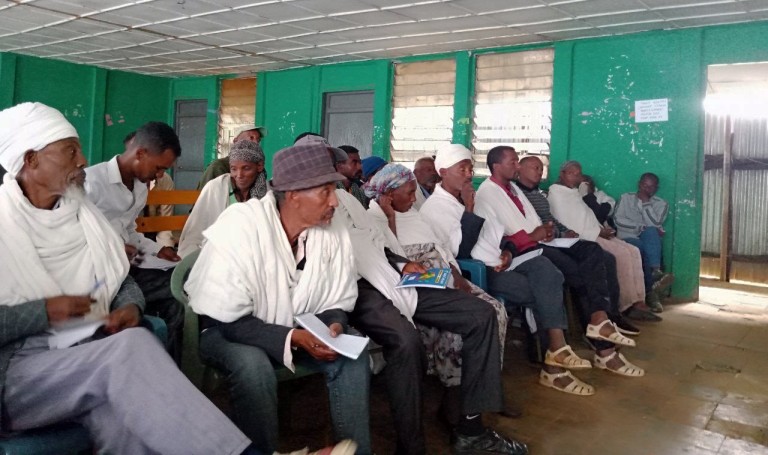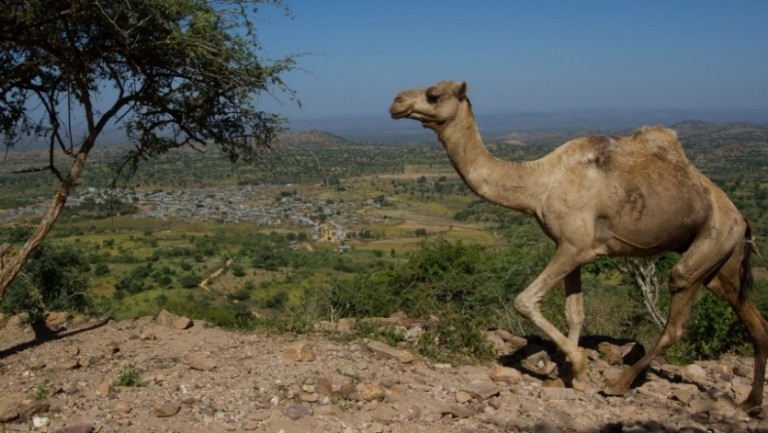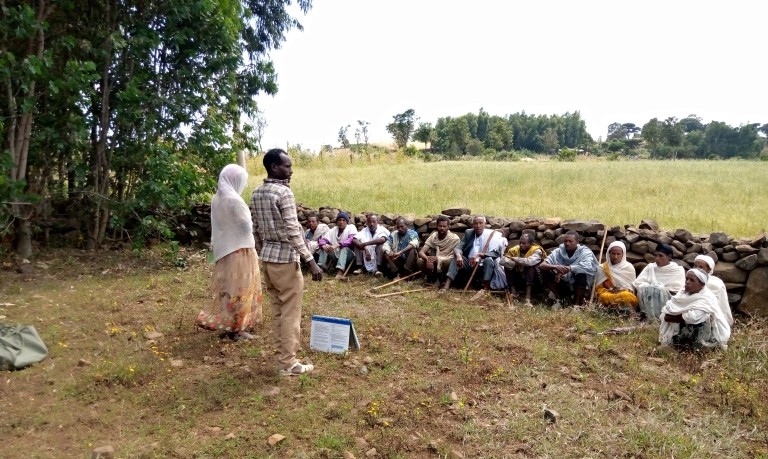Blog
In Ethiopia, communities lead the way to build peace, stability

Like in many parts of the world, the factors that have led to conflict among communities in Ethiopia are complex. In the fall of 2022, with funding from the U.S. State Department, Pact launched the Mobilizing and Enhancing Local Actors for Peace (MELA for Peace) project to foster peace in the most conflict-affected areas of the country’s Amhara and Oromia regions. We sought to address root causes and to empower communities to lead the way.
Our 18-month effort, which recently concluded, focused on 18 communities in particular, and was carried out in partnership with the Ethiopia-based partner EECMY-DASSC and UK-based partner Zinc Network.
Our strategy involved transferring skills to community members so that they owned conflict resolution mechanisms that could be added to a foundation of their own peacebuilding experiences and traditions. MELA for Peace enabled local solutions to community conflict, built social cohesion and integrated interventions including community dialogues, trauma healing, conflict early warning and response, peace promotion, and the combatting of disinformation – all to mitigate and end ethnic and religious incitement.
MELA for Peace’s successes have been many, thanks mostly to communities themselves, which are carrying peacebuilding forward today.
Roads between communities have reopened
Over the past five years, roads connecting Amhara and Qemant communities fell into disuse and danger as targets for kidnappings and assaults. After reforging connections through MELA for Peace initiatives, peace actors in a dozen communities have reopened roads to safe passage. Local leaders, dialogue facilitators and participants in MELA for Peace dialogue sessions have reopened the roads between Awdarda and Adeza, Eyaho Sertia and Amanuel Kenewota, Chandeba and Aykel, Dangura to Chonchoke, Bohna and Adeza, Blajig and Gonderoch Mariam, and Chonchoke and Delgi.

Marketplaces have reopened
Present in many inter-community dialogue joint action plans is the revitalization of marketplaces. Local leaders worked with other peace actors and local authorities to reopen several marketplaces, returning an important mechanism for social cohesion between otherwise isolated communities.
Women’s associations are supporting women’s rights
Near Gonder town, a women’s association had been forced to stop operating because of ongoing conflicts. Coinciding with the active participation of women in the area as peace actors under MELA for Peace, local leaders supported a recommendation to relaunch the women’s association. Today, the association is active in supporting women in legal matters such as divorce.
Communal celebratory events are being organized
Religious ceremonies, especially, once served as important venues for neighboring communities to gather, strengthen bonds and transcend divisions. The communities of Gonderoch Mariam and Blajig kebeles chose, after participating in inter-community dialogue facilitated under MELA for Peace, to reclaim the communal events that once connected them. Last November, community leaders successfully organized a commemoration of the Feast of Saint Mary in Gonderoch Mariam, welcoming neighboring community members.

Land and water in Minjar Shenkora is being shared after 20 years of abandonment
Inter-community dialogue sessions revealed the use and management of natural resources, particularly water and grazing land, as a significant tension point. In Minjar Shenkora woreda, a joint action plan resulting from inter-community dialogue sessions included rehabilitation and co-management of grazing land and a natural spring. Local leaders in both communities already understood that land that had been abandoned due to years of conflict could be valuable to each community; what they lacked was a mechanism for discussing solutions. The experience of co-managing the land catalyzed more productive cooperation, with communities agreeing to divide use of the spring’s water by night and daytime.

Communities are healing from trauma
MELA for Peace wove together community dialogue with trauma healing for community members wherever possible. The trauma healing curriculum used by MELA for Peace is named “Yegarachin” or “It’s Ours.” In one case, a widow, living just outside of Adama, had lost her home and livelihood. She was devastated by recent conflict and influencing her sons to seek vengeance. Trauma healing facilitators worked with her as the community coalesced to help her rebuild her house and recover livestock. Today, she expresses hope and is counseling her sons to direct their energy to rebuilding rather than vengeance.
Dialogue is becoming normalized
Two communities, Efrata Gedim and Artuna Fursi, entered into a new round of conflict last year following the killing of a beloved Bajaj driver. The opposing communities became locked in a cycle of revenge and miscommunication. The MELA for Peace Dialogue Initiative connected them again, but the matter of resolving the cycle of revenge was a longer-term process than one inter-community dialogue could accomplish. The two communities engaged in continuous dialogue and relied on community leaders and peace promoters to keep discussions from lapsing. One result is the restoration of a market that had been used by both communities but was abandoned during the most recent conflict.